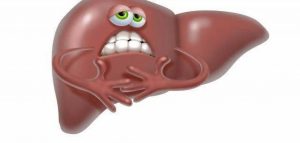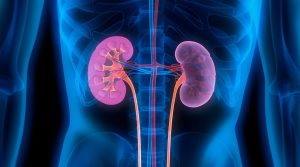An aneurysm is a serious condition in which the wall of a vessel or heart bulges out. This problem arises due to the thinning or stretching of the tissues of the arteries or veins. As a result, an aneurysmal sac is formed, which squeezes the tissues located next to it. In the overwhelming majority of cases, this problem develops in the walls of large and medium vessels. Less commonly, this pathology is observed in the veins. Aneurysm is considered a very serious disease that is life-threatening. She caused the death of such prominent people as Charles de Gaulle and Albert Einstein. Most often, this problem is diagnosed in people over 50 years old. However, it may well appear in fairly young people.
Symptoms of an aneurysm
The disease does not manifest itself for many years. A person can live calmly, not even suspecting that there is an aneurysm in his vessels. In the meantime, it will increase in size and threaten to burst at any moment. Symptoms of the disease appear when the formation reaches a large size and begins to put pressure on the adjacent tissues. For example, if there is an aneurysm in the vessels of the brain, then the person has the following symptoms:
headache;
dilated pupils;
numbness of the face;
double vision;
decreased vision;
pain in the eyes.
With an aortic aneurysm, a person may experience pain in the ribs and behind the breastbone. In addition, the formation puts pressure on the thoracic spine. This also affects the bronchi and trachea, which causes hoarseness and coughing.
Pronounced symptoms are caused by an aneurysm with the threat of rupture. In this case, there is a serious danger to human life. A few days before the rupture of an aneurysm located on the aorta, the patient may experience hemoptysis. Such a symptom should force you to urgently seek emergency medical help.
When a cerebral aneurysm ruptures, a sharp headache similar to migraine occurs. It is burning in nature, and is also accompanied by psychomotor agitation, seizures, visual impairment and loss of consciousness.
Causes of the disease
The disease can be either congenital or acquired. In the first case, aneurysm does not bring any concern to babies and does not affect their development. Such a pathology can be detected only with a comprehensive examination of the child. In addition, signs of aneurysm may appear in people who suffer from the following conditions:
atherosclerosis;
hypertension;
alcoholism;
hyalinosis of the vascular wall;
syphilis;
collagen type IIІ deficiency.
These diseases cause thinning of the blood vessels, which increases the risk of aneurysms in them. It also increases the likelihood of such a pathology in people who have been injured. The risk of developing the disease is especially high when blood vessels are damaged.
According to statistical studies, aneurysm acquired as a result of other diseases mainly affects people over 50 years of age. A common reason for the appearance of such a pathology in young people is considered to be injuries received while practicing extreme sports or during car accidents.
Which doctor treats aneurysm?
Modern medicine is able to cure people with this problem. However, it is very important to seek qualified assistance in a timely manner. The appearance of the first signs of an aneurysm should be the basis for an urgent examination of the patient. Doctors such as:
THERAPIST
SURGEON
In addition, the patient may need consultations with a neurologist, cardiologist, neurosurgeon. At the first appointment, the patient is carefully examined by a doctor. He must ask the patient a few clarifying questions:
How long ago did the vasomotor
rhinitis, what are the symptoms and what kind of treatment did you take?
How long ago did the signs of developing aneurysm appear?
Are there any other health complaints?
Does the patient suffer from chronic diseases?
What can provoke the onset of pain?
Did his close relatives suffer from aneurysm?
Is he taking any medication?
Have you received any trauma with damage to blood vessels?
The survey helps the specialist to draw up a complete clinical picture of the disease. In addition, the information received from the patient can tell the doctor the true causes of the aneurysm. After the interview, the doctor can already make a preliminary diagnosis. But he has the right to confirm it only after receiving the results of the patient’s examination.
A patient who is suspected of having an aneurysm is scheduled to undergo angiography, computed tomography, or magnetic resonance imaging. These highly informative methods allow you to quickly confirm or deny the diagnosis. In addition, the examination results can accurately identify the localization of the bag, its size. If a patient is admitted to the hospital with a suspicion of a ruptured aneurysm, then he is referred for an urgent analysis of cerebral fluid.
Treatment methods
Today, doctors offer to cope with aneurysms only by surgery. No drug therapy for this disease has yet been created. As soon as a person has been diagnosed with an aneurysm, he is immediately offered surgical treatment. There are two main types of transactions: open and closed. Which of them will be performed on the patient is determined by the doctors. In doing so, they take into account:
with which method the risk of complications is less;
the size of the aneurysm;
its exact location;
patient preferences.
The open type of surgery is performed by neurosurgeons. This surgery is also called clipping. During the operation, the specialist performs craniotomy. After finding the aneurysm, the doctor puts a special clip on its neck, which prevents blood from entering the aneurysmal sac.
Closed surgery is less traumatic for the patient. If this type of treatment is prescribed, then the aneurysm is eliminated by the intravascular route. Such an operation is performed only by highly qualified and experienced neuroradiologists. They use an angiographic method of treatment. During the operation, they penetrate the aneurysm using a thin catheter, and then create an obstacle that does not allow it to fill with blood.
If during the operation the aneurysm https://en.wikipedia.org/wiki/Aneurysm was removed, then the treatment is considered successful, and the person is completely cured. At the same time, he will not have any consequences of the operation. In cases where a patient is admitted to the hospital with a ruptured aneurysm, doctors can save his life. However, very often such people have residual effects in the form of:
changes in behavior;
unreasonable aggression;
decreased vision;
speech disorders;
problems with limb mobility;
epilepsy.



